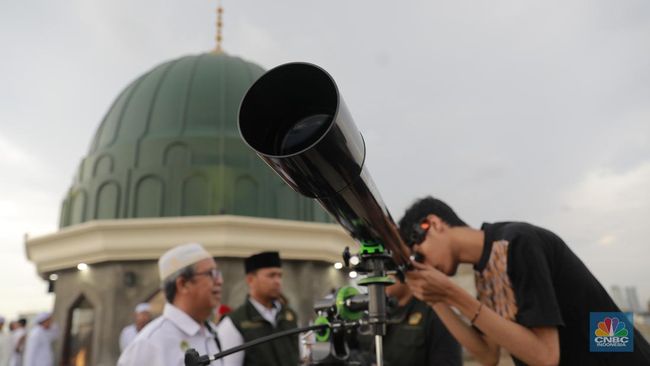Red light therapy has many potential benefits, including boosting skin health, wound healing, hair growth, aiding in recovery and more. That's why many people have adopted LED face masks as part of their modern skincare routines. However, these red light therapy masks can cost a pretty penny, which is why we've taken it upon ourselves to research and test to find the best LED masks based on irradiance, light wavelengths, the type of mask, comfortability, ease of use and, of course, price.
- Best LED Masks of 2025, FDA Cleared for Red Light Therapy
- What is the best LED face mask overall?
- Best LED face masks of 2025
- Best overall LED Face Mask
- Best flexible LED mask
- Best LED Mask for professional-grade results
- Best LED face mask for men
- Best LED mask for multitasking
- Best LED and red light therapy masks, compared
- How we chose the best LED masks
- What is an LED face mask?
- What is red light therapy?
- What type of light should I look for in an LED mask?
- A note for sensitive eyes
- Factors to consider when choosing an LED face mask
What is the best LED face mask overall?
The best LED face mask overall is the Shark CryoGlow LED Face Mask, which combines red light therapy with cryotherapy to provide a cooling effect. It's also lightweight and sessions are quick, so it's great for travel and busy schedules.
Best LED face masks of 2025
Pros
- Combined LED therapy with cryotherapy
- Cordless and lightweight at 1.49 pounds
- Quick treatment time of 4-15 minutes
- The cheapest mask on this list at $350
- Has the highest irradiance at 128mW/cm
Cons
- The cooling effect may not be for everyone
- The cryotherapy eye patches block the LED treatment on under eyes
Why we like it: The Shark CryoGlow LED Face Mask stands out by combining LED red light therapy with cryotherapy for a refreshing, spa-like experience at home. It uses red and blue LED lights to target collagen production and acne while delivering a cooling effect on your under eyes.
Who is it best for: Unlike traditional LED masks, this one is designed for quick sessions, making it easy to fit into busy skincare routines. You can choose from four treatment options: Better Aging (6 minutes -- to target fine lines and wrinkles), Skin Clearing (8 minutes -- for acne), Skin Sustain (4 minutes -- for maintaining glowy skin) or Under Eye Revive (5-15 minutes -- cooling routine without LEDs). Using the controller, you can choose from three cooling settings to fit what you're most comfortable with. You can also track your progress to see how many sessions (and which ones) you've taken.
From the first use, I noticed how the cooling sensation instantly soothed my face (similar to an ice roller). I find the Under Eye Revive especially helpful in the morning to depuff my under eyes.
What I love most about the CryoGlow is how lightweight it is at 1.49 pounds, making it convenient to pack or have on while you multitask.
Who should not get it: At $350, it certainly is an investment, but I also think it's the best bang for your buck as it targets multiple skin concerns. It is also the cheapest mask on this list.
Pros
- Provides 633nm red light and 830nm of near-infrared
- Company has a lot of publicly available research
- Comfortable and versatile with flexible mask
Cons
- Not as powerful or irradiant than other LED face masks on the market
- It comes with a chord and power button attached, so you need to carry it around during use
- No blue light
- Costs $395
Why we like it: Omnilux is one of the most popular LED face masks on the market, and for good reason: Its tech is cleared with the FDA and it contains the right formula of light for anti-aging and brightening results (633nm red light and 830nm of near-infrared). Price-wise, it’s not the most expensive out there and is fairly middle-of-the-road. Of course, in LED face mask lands, that means it’s still a big chunk of change to drop.
Who is it best for: I’ve been wearing the Omnilux Contour on and off for the past few months and I’ve thoroughly enjoyed it. I don’t think I’ve used it consistently enough to see improvements in fine lines (for me, that’s mostly around my mouth), but I do like how it gives me a bit of a glow after. I plan to keep using it, as I was not expecting any LED face mask to work “miracles” or drastically change my face overnight.
Who should not get it: One thing about all Omnilux LED masks in general is that it has a cord and power button you’ll need to keep with you while using it. I don’t mind this at all, since I take my light therapy time as an opportunity to lay on the ground and practice mindfulness, but for multitaskers that want to do light therapy during chores, this may be annoying and they may opt for a different mask.
This mask also doesn't offer blue light, so it wouldn't be best for those with acne.
Pros
- Combines red, infrared and near-infrared light to target multiple skin concerns
- Comfortable to wear with adjustable straps
- Quick treatment time (10 minutes)
Cons
- Full-face coverage may feel bulky
- Priced at $470, the third highest on this list
- Lower irradiance of 30 mW/cm2
Why we like it: The CurrentBody LED face mask is a great option for those seeking professional-grade skincare treatments from home. This mask offers a combination of red, infrared and near-infrared light therapies to address multiple skin concerns like fine lines, wrinkles, acne and uneven skin tone.
The red light stimulates collagen production, the infrared firms, tightens and brightens the skin and the near-infrared targets areas where aging signs are more pronounced, like wrinkles.
Who is it best for: It has an adjustable strap and a lightweight design, which will make it comfortable for most people to wear for the 10-minute sessions. I also appreciate that this mask covers the area under your chin, which I haven't seen from most other brands.
Who should not get it: On the price side, this is the third most expensive mask on this list despite it having a lower irradiance of 30 mW/cm2, so if your budget is under $470, this wouldn't be the right mask for you.
Pros
- Specifically designed for men
- Omnilux is a solid LED face mask brand that makes other popular devices
- Mask is larger and provides for more room around the head and face
Cons
- Jury is out on whether the extra-deep, 1072nm near-infrared wavelength really is needed to benefit men’s skin
Why we like it: Omnilux, riffing off their wildly popular Omnilux Contour Face mask, has come out with a mask for men. No, light therapy isn't gender-dependent. But Omnilux said it created this mask for men because men’s skin is a little thicker, so they included an extra-deep wavelength (1072nm near-infrared) to get under that thick skin.
Who is it best for: Whether or not this really matters remains to be seen, but I did find the mask for men much roomier, making it suitable for larger faces or features. It also has a different pattern than the Contour. In terms of treatment time, it’s the same drill: 10 minutes, and you hold the cord.
Who should not get it: If you don't need a roomier mask and aren't sold on the extra-deep, near-infrared wavelength for thicker skin, then another mask on this list would be better for you.
Pros
- Comfortable
- Easy to use
- Lightweight at 181 grams
- Secure fit
- Three modes
- Breathable
- Has eye shield
- Higher irradiance at 59.11 mW/cm2 (all 3 wavelengths)
Cons
- Doesn't come with USB power adapter
- May not be for those who prefer a flexible material
- Second highest price at $499
Why we like it: Complete with 360 LEDs, the Illumina Face Mask offers triple wavelength technology, featuring red, infrared and blue light therapy to target wrinkles, acne, sun damage and enlarged pores. It has also been FDA-cleared, IEC safety tested and ISO quality assured. It is recommended to be used 3-5 times per week for 10 minutes. Once you start a treatment, it will automatically turn off after 10 minutes.
We also have to mention that this product offers the longest trial period of 100 days.
Who is it best for: iRestore calls Illumina the "most multitasker-friendly mask," and they are right. It has a built-in eye shield and slit for breathing, hovers over the face for comfort and to prevent sweating, is lightweight at only 181 grams and has dual straps for a secure fit. It has a MagSafe-inspired, snap-on power cable that connects to an easy-to-use remote that can be clipped onto a piece of clothing for moveability. Plus, the remote is interchangeable and can be used across different iRestore masks.
The Illumina Face Mask comes with a storage pouch and microfiber cloth for cleaning. It requires a USB power adapter (not included) for charging and takes 2 hours to charge.
Who should not get it: This is the second most expensive mask on this list, so if $499 isn't in your budget, this wouldn't be the right mask for you. While this mask has the longest return window of 100 days, it does have the shortest warranty of 1 year. However, you can extend it to three years for an extra $49.
| Light specs | Irradiance | Type of mask | Warranty | Returns | Price |
| 630nm red light, 415nm blue light, 830nm deep infrared light | 128mW/cm | Hard shell | 2 years | 60 days | $350 |
| 633nm red light and 830nm near-infrared | 30 mW/cm2 | Flexible | 2 years | 30 days | $395 |
| 633nm red light, 830nm infrared light, 1072nm deep near-infrared | 30 mW/cm2 | Flexible | 2 years | 60 days | $470 |
| 633nm red light, 830nm near-infrared light, 1072nm near-infrared | 30 mW/cm2 | Flexible | 2 years | 30 days | $395 |
| 635nm red light, 415nm blue light, 830nm infrared light | 59.11 mW/cm2 (all 3 wavelengths), 34.65 mW/cm2 (red/infrared), 24.26 mW/cm2 (blue light) | Hard shell | 1 year | 100 days | $499 |
We selected masks only from companies that have clearance for their technology from the US Food and Drug Administration (FDA). This means that the LED light specs provided through each mask are safe to use as directed. It also means that -- while you shouldn’t expect dramatic results overnight -- the mask has shown at least some level of efficacy.
We then tested all the LED masks on this list ourselves, making selections based on the type, strength of light, different wavelengths, material, warranty and return policy and price.
LED masks, which have light-emitting diode in the form of red, near-infrared and blue light, are still making wellness waves as one of the trendiest (and priciest) ways to revamp your skincare routine at home, using a powered-down approach to anti-aging and skin rejuvenation already done at the dermatologist's office.
However, this doesn’t mean all LED face masks are created equal. In fact, many of them do not have the right specifications or safety clearance to improve your skin’s glow or reduce the appearance of acne.
Before you get started with light therapy at home, it’s important to note that an LED face mask shouldn’t replace an existing skincare routine consisting of research-backed ways to keep your skin healthy and glowing, including using a sunscreen with SPF 30 or over, finding a face-washing cadence that suits your skin type and regularly using other skin-boosting agents, such as retinoids.
It’s also important to keep in mind that even the best LED face masks will not work skin miracles or cause your face to change drastically. If that’s your goal, you can consider more invasive or direct cosmetic care such as botox or filler.
With all that being said, there is enough evidence linking red light therapy to the improvement of skin appearance to make an investment in a quality LED face mask worth it. To make your hunt a little easier, we’ve rounded up a list of the best LED face masks out there.
Red light therapy is used for skin rejuvenation and brightening for people wanting to reduce the appearance of some signs of aging, like fine lines, or brighten their skin overall. It’s traditionally been used in dermatologists’ offices in higher strengths, but in recent years, at-home red light therapy masks have become a hot new skincare tool. The research behind it shows that, at certain levels (more on that below), red and near-infrared light can stimulate collagen production.
Light therapy has also been used as a medical therapy versus a more cosmetic one. For example, there is research showing the potential benefits of red and near-infrared light therapy on tendon healing. Red light therapy may also be used for hair loss.
If you’re after skin-brightening or anti-aging effects, look for a mask that has at least 630nm of red light and 830nm of near-infrared light. We’ve spoken with dermatologists who recommend this combination, and research supports its use in the way it penetrates skin.
If acne is your target, however, you should choose a mask with blue light. Blue light has antibacterial effects and targets closer to the surface of the skin than red or near-infrared light, which goes deeper.
I will take this time to address one small scare I had during my entire testing of the Omnilux face masks, which turned out to be a lesson in reading the fine print. I’d been using red light therapy masks while lying down as part of a nice meditative routine. But one day with the Omnilux mask for men, I had my eyes wide open while reading a political article for the duration of the 10-minute treatment. After taking off the mask, roughly 20 minutes later, I started to feel symptoms of what I’d assumed in the past to be an ocular migraine. My vision felt slightly distorted, like I could still see but through a slightly watery filter.
I won’t lie, I freaked out a little. While I knew that Omnilux’s products were FDA-cleared and red light is safe when used as directed near the eyes for most people (there's even some research suggesting red light can benefit eye health), I didn’t read the fine print of contraindications for using the Omnilux mask, which warns people prone to light-induced headaches and other conditions that make you more sensitive to light, some skin conditions and genetic eye conditions.
My vision was completely normal within an hour, as it has the handful of other times I’ve had symptoms of a migraine brought on most often by changes in light, or something really similar that temporarily distorts my vision than makes me very tired and gives me a headache.
I have continued to use the Omnilux Contour Mask (I have zero clue if the extra-deep wavelength in the men’s mask had anything to do with it), but with my eyes completely closed and after exposing them to other sources of light so it’s not as abrupt an adjustment from complete dark to red light. This is strictly my choice, though. If you also get light-induced headaches or are otherwise sensitive, ask your doctor before trying an LED face mask. Also, check the list of contraindications and safety instructions before buying and using any light therapy mask. You can also buy eye protection to wear with your mask if your eyes are particularly sensitive.
FDA clearance: For safety, and to make sure you’re not buying a counterfeit product, it’s a good idea to purchase a mask that has been cleared by the FDA.
Specs of light: For anti-aging and skin-brightening effects, you’ll want to choose a mask that has red and near-infrared light. If you want to target acne, look for a mask that has a blue light setting.
Irradiance or power: Generally speaking, the higher the irradiance of the LED mask, the more powerful it may be. However, higher irradiance can mean more heat and warmth on your face, which may be uncomfortable to some.
Whether you’ll use your LED mask regularly: A quality LED face mask will run you at least a few hundred dollars, so it’s an investment to say the least. Before you hit the buy button, make sure you’re interested enough in revamping your skincare routine to stick to the mask’s recommended use cadence -- in most cases, this is a few times a week.
Don’t neglect your overall skincare regimen: Just because you’ve added a fancy new LED mask to your routine doesn't mean you can skip out on other skincare measures that have quality research behind them. This includes wearing a daily facial sunscreen, washing your face according to your skin type and using other products with anti-aging or skin-brightening properties, such as retinoids.
Red light therapy may not be safe or suitable for people with some health conditions, including lupus erythematosus, photosensitive eczema or albinism, according to Omnilux information. You also shouldn’t try light therapy at home (at least without asking your doctor first) if you have a photosensitive disorder which makes you especially sensitive to light, or if you have light-induced headaches.
Otherwise, as long as you choose a brand that’s been cleared by the FDA, and you follow each company’s directions for use, LED masks should be generally safe to use for most people. At the wavelengths mentioned, red and near-infrared light shouldn’t hurt the eyes. Some people may have eyes more sensitive to light and should invest in eye shields or keep their eyes shut.
Blue light is another story, however. Blue light may be largely safe to look at when emitted through a screen, for example, but there isn’t as much research on blue light from LED masks on the eyes. If you’re using a light therapy mask for acne (and choosing one with blue light), make sure you’re following the instructions and consider wearing eye shields or goggles, usually sold through the LED mask company.
If you’d like to target sagging skin or are interested in anti-aging effects, you should look for an LED mask with appropriate wavelengths of red and near-infrared light (about 633nm and 830nm, respectively).
The Mayo Clinic's research and dermatologists suggest that LED face masks are generally safe to use. However, people who are sensitive to light should avoid them. Additionally, eye protection is recommended, especially with blue light.
While home LED masks are usually not powerful enough to cause high-intensity damage, it is still possible to cause skin irritation if used for excessively long durations of time. When using LED masks, you should always follow the manufacturer's recommendations for duration of use.
You don't need to put anything on your skin before red light therapy. However, you should cleanse your skin and make sure it is completely dry before treatment.
Yes, 10 minutes is enough. However, you should always follow the specific instructions and recommended treatment time for your device.
The potential benefits of LED lights -- and specifically red light therapy -- include skin health, wound healing, cellular health, improved circulation, detoxification, pain relief and recovery, a boost to your mood, supporting heart health, hair growth and promoting better sleep.
Specifically for LED face masks, the different types of LED lights include red (anti-aging and skin-brightening), blue (acne) and near-infrared light (which penetrates deeper into the skin to boost skin regeneration and healing).
If you're sensitive to light or take medication that makes you sensitive to light, you should avoid using LED lights in face masks. You should also read your specific device's contraindications to ensure you don't have a medical condition that would make using an LED mask unsafe. Cconsult your doctor before using an LED face mask.
For red light therapy, the most effective LED light wavelength is between 630-660nm. For near-infrared light, 830nm is recommended. As for blue light, it seems that most devices operate at a 415nm wavelength.

 3 months ago
34
3 months ago
34















































